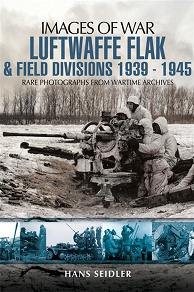E-bok
Luftwaffe Flak and Field Divisions 1939-1945
From the outset of WW2, Gőring’s Luftwaffe Flak units saw extensive fighting with their 2cm, 3.7cm and deadly 8.8cm anti-aircraft guns. By the time of Hitler’s invasion of Russia, Luftwaffe ground forces had been expanded and were being used in both the army support and air roles.
After initial success on the Eastern Front turned to stalemate and huge losses, Hitler ordered the raising of Luftwaffe Field Divisions to bolster the Army. These were initially under Gőring’s command but in late 1943 were handed over to the Army and reorganized as standard infantry divisions (of three two-battalion rifle regiments) retaining Luftwaffe designations. The most famous was the elite Hermann Gőring Divisions, which was reorganized as a Panzer Division.
By 1944 there were no less than twenty-one Luftwaffe Field Divisions plus many similar regiments, fighting on all fronts. Of all German anti-tank weapons, the 8.8cm gun was the most feared and destructive.
This book describes the evolution of this unique element of the Nazi war machine by means of clear text and superb images.
After initial success on the Eastern Front turned to stalemate and huge losses, Hitler ordered the raising of Luftwaffe Field Divisions to bolster the Army. These were initially under Gőring’s command but in late 1943 were handed over to the Army and reorganized as standard infantry divisions (of three two-battalion rifle regiments) retaining Luftwaffe designations. The most famous was the elite Hermann Gőring Divisions, which was reorganized as a Panzer Division.
By 1944 there were no less than twenty-one Luftwaffe Field Divisions plus many similar regiments, fighting on all fronts. Of all German anti-tank weapons, the 8.8cm gun was the most feared and destructive.
This book describes the evolution of this unique element of the Nazi war machine by means of clear text and superb images.
Logga in för att låna
Information
Stöds av följande plattformar
PC/Mac
Surfplatta Läsplatta
Smartphone

